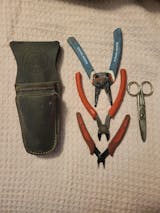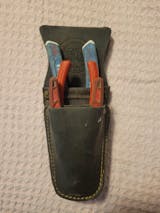For professionals working at heights, every tool and piece of equipment can make a significant difference. Not just for efficiency, but also for personal safety. In the myriad of equipment options, the underrated champions are the hoist buckets and tool pouches. These ensure that essential working tools are always within arm's reach. Let's dive deep into understanding the ins and outs of safely using and maintaining these tools.
Why Tool Pouches and Hoist Buckets are Essential
Imagine being suspended several meters off the ground, and you suddenly realize that you've left a crucial working tool on the ground. Now, either you have to descend and interrupt your workflow or risk a makeshift solution which might compromise your work quality or safety. This is where hoist buckets and tool pouches come into play. They ensure that everything you need is right with you, reducing downtime and increasing productivity.
How to Wear a Tool Belt: The Basics
One might wonder, how to wear a tool belt effectively? It's not merely about strapping it around your waist. It starts with choosing the right task tool belt. Depending on your job, the tools you regularly use might differ. For an electrician, there might be more pouches or pockets for pliers and screwdrivers, while a carpenter might require slots for hammers and measuring tapes.
A well-fitted tool belt should rest comfortably on your hips. It shouldn’t be too tight to restrict movement or too loose to become a hindrance. The weight should be evenly distributed to avoid any strain on your back. Remember, a tool belt is an extension of you; wearing it correctly ensures you can work efficiently without any discomfort.
Safety Measures with Hoist Buckets
Hoist buckets might seem straightforward – they are, after all, just buckets that you can hoist. However, ensuring they are used safely is paramount. The primary concern is weight. Overloading a hoist bucket not only risks dropping tools, but it can also impact the stability of your work platform.
Always be mindful of the manufacturer's guidelines regarding weight limits. Regularly inspect the bucket for any wear and tear. The last thing you need is a weakened bucket that might give way.
Tips for Working at Heights
Since our focus is on safety and efficiency, here are some tips for working at heights:
- Always Check Equipment: Whether it's a working tool, hoist bucket, or your tool belt, regular inspections are vital. Look for any signs of wear and tear.
- Stay Updated with Training: Safety protocols and techniques evolve. Ensure you're always up-to-date with the latest practices.
- Maintain a Clean Workspace: When working at heights, a cluttered workspace is a hazard. Ensure that tools are either in your tool pouch, hoist bucket, or securely placed.
- Secure Tools: Especially when not in use. A free-falling working tool is not just a threat to those below, but can also destabilize you.
- Be Aware of Your Surroundings: Always be aware of weather conditions, the stability of your platform, and other factors that could affect your safety.
Conclusion
Safety and efficiency go hand-in-hand when working at heights. A well-maintained and adequately utilized tool pouch or hoist bucket not only ensures that you have your working tools handy, but it also ensures you’re safe, reducing the risk of any potential accidents.
Equip yourself with the knowledge and tools to climb with confidence. In the end, it's about performing your job to the best of your ability while ensuring your safety and of those around you. Always prioritize safety, even if it means spending a little extra time ensuring everything is in place. The rewards, both in terms of productivity and personal well-being, are well worth it.



